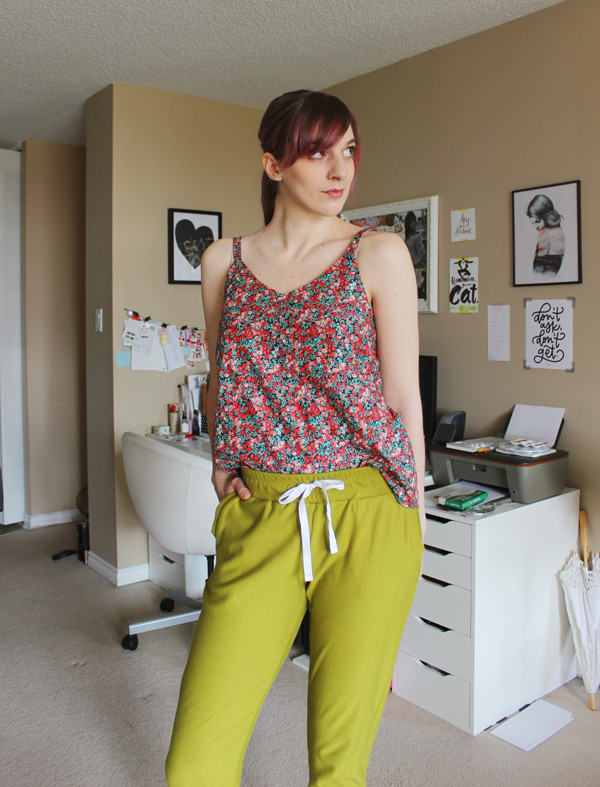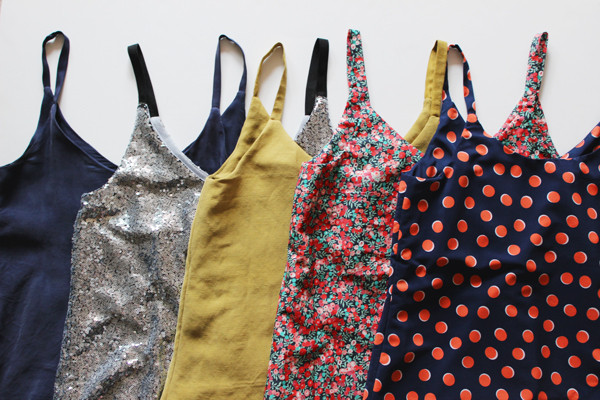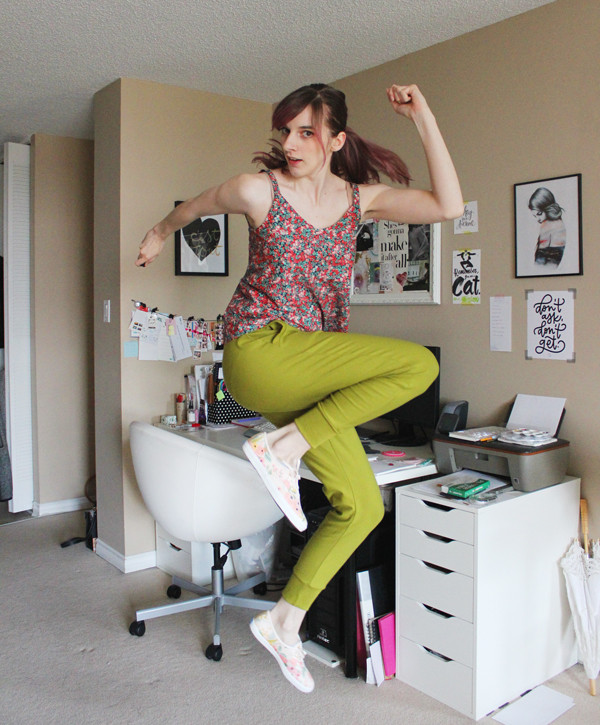For the longest time, my sewing journey was a whirlwind of one-time creations. The idea of repeating a pattern felt almost… boring. Why make the same thing twice when the world of fabrics and patterns was so vast and varied? Novelty was my driving force, and the concept of a TNT – Tried ‘n’ True – pattern collection seemed like a distant, unappealing train chugging along in the distance. Variety, after all, was the spice of my sartorial life. Why settle for one favorite when you could have a closet bursting with unique pieces? It felt wasteful, somehow, to duplicate efforts when every day could bring a new fabric, a new style, a new sewing adventure.
But as time went on, something shifted. My sewing skills sharpened, my personal style solidified, and I began to gravitate towards patterns that offered both speed and satisfaction, while significantly elevating my wardrobe. And yes, I started repeating them. My mind began to wander to the possibilities: different fabrics, a rainbow of colors, all applied to these foundational patterns that could seamlessly fill multiple roles in my closet. The realization dawned that creating variations of these essential building blocks could lead to a wardrobe of effortlessly stylish outfits, pieces that could be mixed and matched endlessly. This approach, it turned out, was far less wasteful than accumulating a collection of singular garments, each limited to a specific, isolated outfit. Perhaps, I mused, there was real merit to this TNT concept after all. It wasn’t about “Boots And Cats And Boots And Cats” repetition in a mundane way, but about finding a rhythm in sewing, a satisfying loop of creation and wear.
 Three Ogden Cami tops in linen, liberty lawn, and polka dot fabric, laid out on a cutting mat with sewing tools.
Three Ogden Cami tops in linen, liberty lawn, and polka dot fabric, laid out on a cutting mat with sewing tools.
The first pattern to usher in this new era of TNTs was the True Bias Ogden Cami. Initially, I was hesitant. V-necklines and I have a complicated history, typically ending in unflattering disappointment. However, New Year’s Eve loomed, and I needed a quick pattern for a sequin top. The Ogden Cami’s simple lines and readily available PDF print tipped the scales, prompting me to take the plunge. And to my surprise, the neckline proved to be flattering in a way that V-necks usually aren’t on me. I genuinely loved that sequined version. Then, a few months later, I needed a portable project for a sewing afternoon with a friend. Few pattern pieces? Check. No fiddly notions required? Check. Could be completed in a few hours? Check, check, and check. The rest, as they say, is sewing history.
 Close up of the author wearing a sequin Ogden Cami top, showing the flattering V-neckline.
Close up of the author wearing a sequin Ogden Cami top, showing the flattering V-neckline.
As spring approached, the Ogden Cami pattern resurfaced, this time with a plan for expansion. I cut out three more camis in a variety of fabrics to suit different moods and outfit needs: one in sophisticated solid linen, one in punchy Liberty lawn, and one in breezy polyester polka dots. I decided to tackle them all in a batch-sewing frenzy. And let me ask you – why did no one tell me how utterly amazing batch-sewing is? It was incredibly satisfying to watch them progress as a group, and to emerge at the end of what felt like a single project with three entirely new garments. It’s like the “boots and cats and boots and cats” of sewing production, a rhythmic process leading to multiple beautiful outcomes.
To streamline the construction process, I decided that navy thread would serve as a common denominator for all three fabrics. I used it for the main construction, switching to matching threads only for top-stitching and under-stitching at the finishing stage.
The only pattern modifications I made were extending the length by about 4 cm – a change I directly incorporated into my pattern pieces for future iterations – and, feeling slightly adventurous, rounding the neckline on the polka-dot version to see if I liked it. The rounded neckline works, but I think it diminishes some of the pattern’s inherent style, making it feel more basic. I’ll likely reserve this rounded neckline for camis specifically intended for layering.
 Close up detail of the polka dot Ogden Cami with a rounded neckline, showing the fabric texture.
Close up detail of the polka dot Ogden Cami with a rounded neckline, showing the fabric texture.
Now, in my usual routine, these new camis would be paired with jeans and a cardigan, and I’d be ready to go. But as we all know, jeans weren’t exactly the wardrobe staple of the moment. Comfortable pants (that weren’t pajamas) were urgently needed.
The solution, I knew, lay in the True Bias Hudson Pants (realizing this was evolving into a full True Bias ensemble!). I’d had this pattern in PDF form for years, acquired as part of the Perfect Pattern Parcel (RIP). While I initially bought the bundle for the Julia Cardigan, the Hudson Pants piqued my interest, but I never quite found the right moment – or need – for them until now.
My fabric stash became the hunting ground for the perfect material, as I was determined to adhere to my self-imposed “no shopping until you complete existing projects” rule (inspired by my linen Kielo Wrap Dress). However, my current stash was heavily skewed towards woven fabrics and novelty prints, or simply lacked sufficient yardage for pants. Then, serendipitously, Blackbird Fabrics launched a collection of bamboo and cotton stretch fleece fabric a few weeks prior, and it called to me as the epitome of comfort for house pants.
 Two pairs of Hudson Pants, one in grey and one in lime green fleece, styled casually on a chair with a plant in the background.
Two pairs of Hudson Pants, one in grey and one in lime green fleece, styled casually on a chair with a plant in the background.
And yes, these Hudson Pants were destined to be house pants. I could wear them out (when venturing out becomes commonplace again), but allow me a brief detour…
Some years ago, a few sewing bloggers introduced me to the Kibbe style identities. Down the rabbit hole I went, and while the system isn’t without its complexities (and fashion shouldn’t be rigidly rule-bound), one aspect resonated deeply and helped articulate something I’d struggled to define about my wardrobe. The system proposes three ‘levels’ of dress, from 1 (most casual) to 3 (most formal or “dressed up”). Different style personalities can navigate these levels with varying degrees of flexibility. For instance, on some, joggers and a tee read as stylishly casual level 1, while in the same outfit, I feel more like I’m ready to paint the fence (level 0?). My Kibbe type, soft dramatic, tends to thrive in slightly more streamlined and polished pieces, naturally leaning towards a level higher than other types. I’ve always felt slightly “off” in very casual clothes, like hoodies or graphic tees, even when they look fantastic on others. Conversely, I find myself wearing my Kielo Wrap Dress in more casual contexts than its style might typically suggest. This is just my personal resonance with the system; ultimately, you sew for you.
 The author wearing the grey Hudson Pants and a black top, standing in a bright indoor setting.
The author wearing the grey Hudson Pants and a black top, standing in a bright indoor setting.
Back to comfort at home – these joggers were a quick and enjoyable make, especially since I batch-sewed them as well. Constructed mostly on my serger, they came together in just a few sewing sessions with minimal alterations. I wanted the lime green pair cropped at the ankle, but not as short as the mid-calf pattern option, and the grey pair full length. The pattern is drafted for a 28″ inseam, and since my inseam is 30″, I kept the pattern as-is for the green and added 2″ to the grey. My only minor complaint is the waistband, which I wish I’d taken in just a touch. It’s slightly too large, requiring more reliance on the drawstring than intended. I could adjust the elastic, but the effort of unpicking doesn’t quite justify the minor annoyance. It’s noted for future versions, perhaps another batch sewing project in the future, like “boots and cats and boots and cats” Hudson Pants edition!
I am genuinely thrilled with these pants. They are as comfortable as pajamas, yet putting them on in the morning makes me feel a bit more… myself. I love the contrast details with the black and grey, and the vibrant pop of color from the green pair, adding that extra touch of personality. I’m perfectly comfortable checking the mail in these, and the soft fleece is undeniably cozy.
 Close up detail of the lime green Hudson Pants showing the cuff and fabric texture.
Close up detail of the lime green Hudson Pants showing the cuff and fabric texture.
With both the camis and pants completed, I wanted to add a final, special touch. Enter: fun labels! These particular labels are from Kylie and the Machine, sourced from Blackbird Fabrics. The “this is the back” tag is especially practical on the Ogden Camis, as the front and back are quite similar, and I’ve mixed them up more than once. Adding labels feels like a little extra detail that elevates my handmade garments, especially those I know will be in heavy rotation. It just adds a touch of “legitimacy,” you know?
 Close up of garment labels sewn into the Ogden Cami and Hudson Pants, showing details like "This is the back" and brand labels.
Close up of garment labels sewn into the Ogden Cami and Hudson Pants, showing details like "This is the back" and brand labels.
Now, if you’ll excuse me, I must get back to living out the rest of my Me Made May in these comfortable creations and making progress on my UFO (Unfinished Objects) list. Happy weekend sewing!

